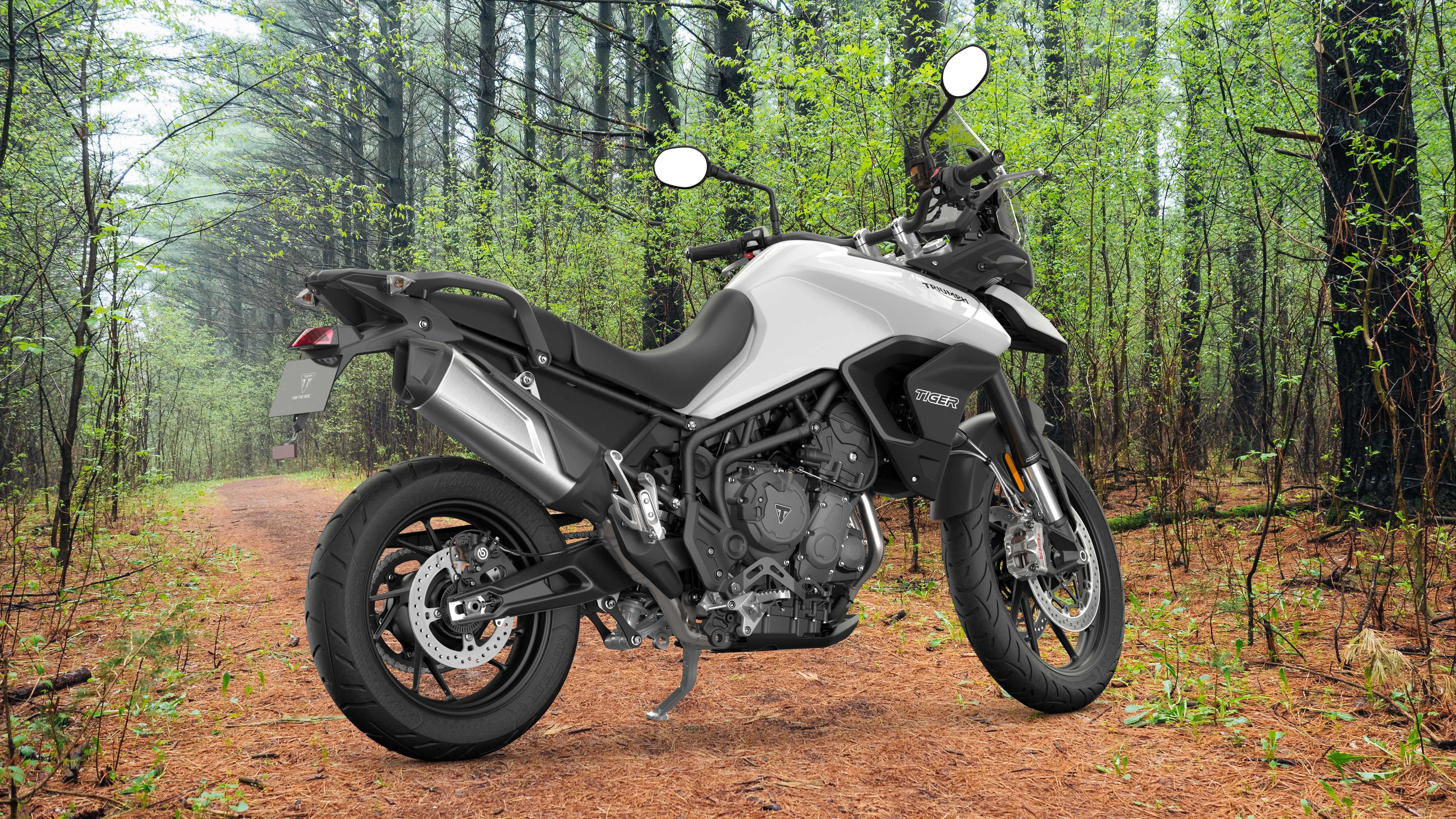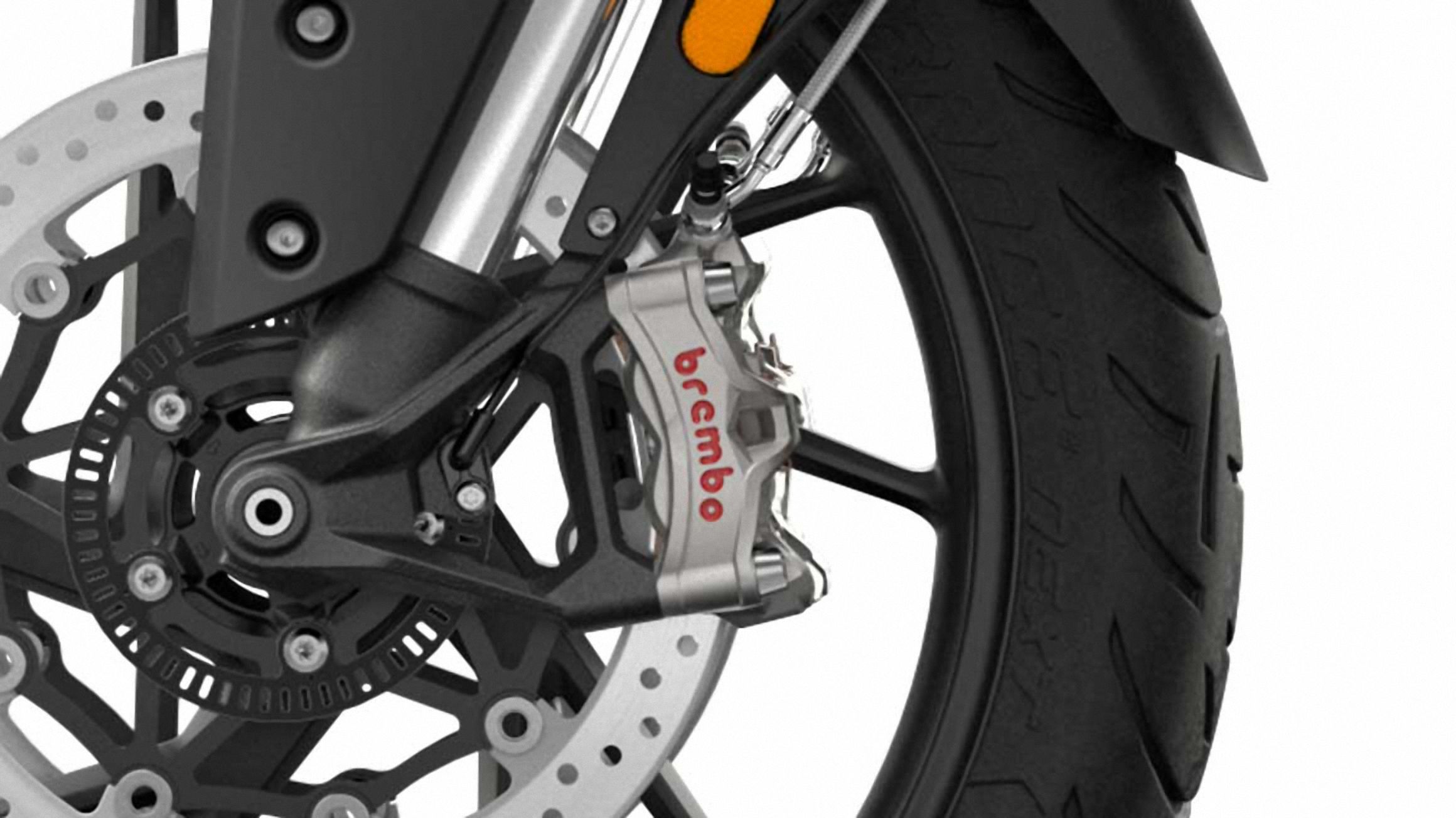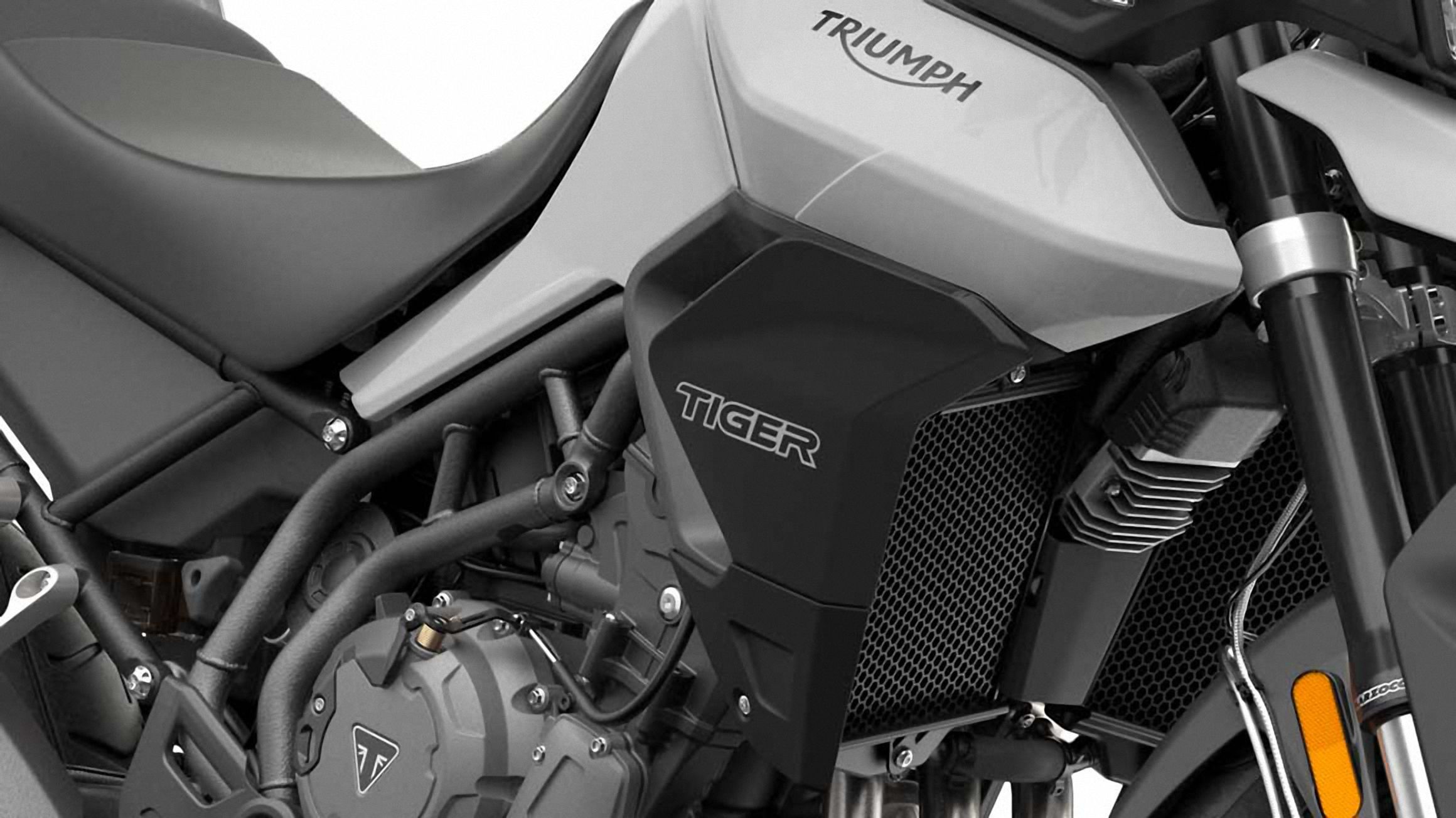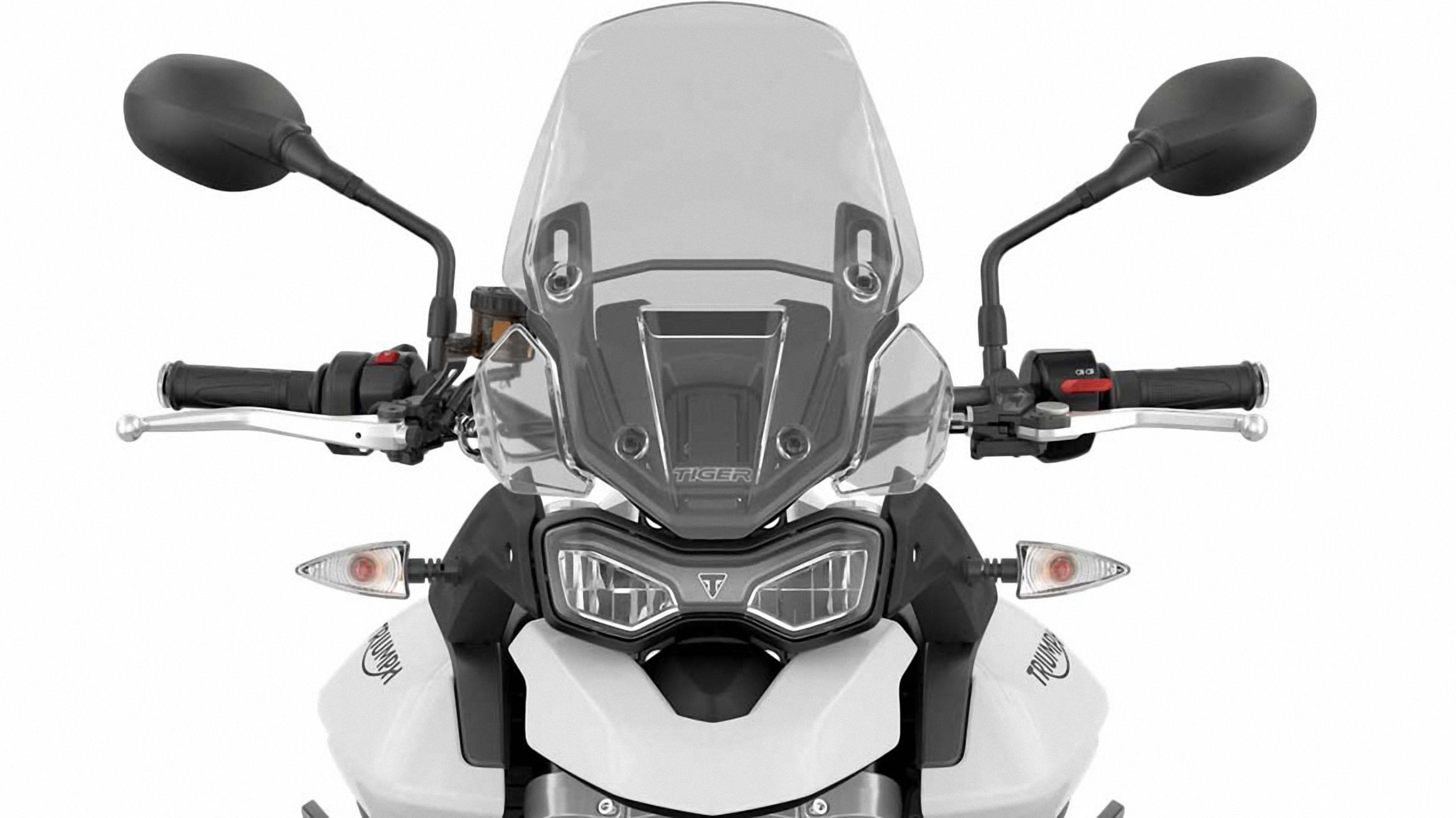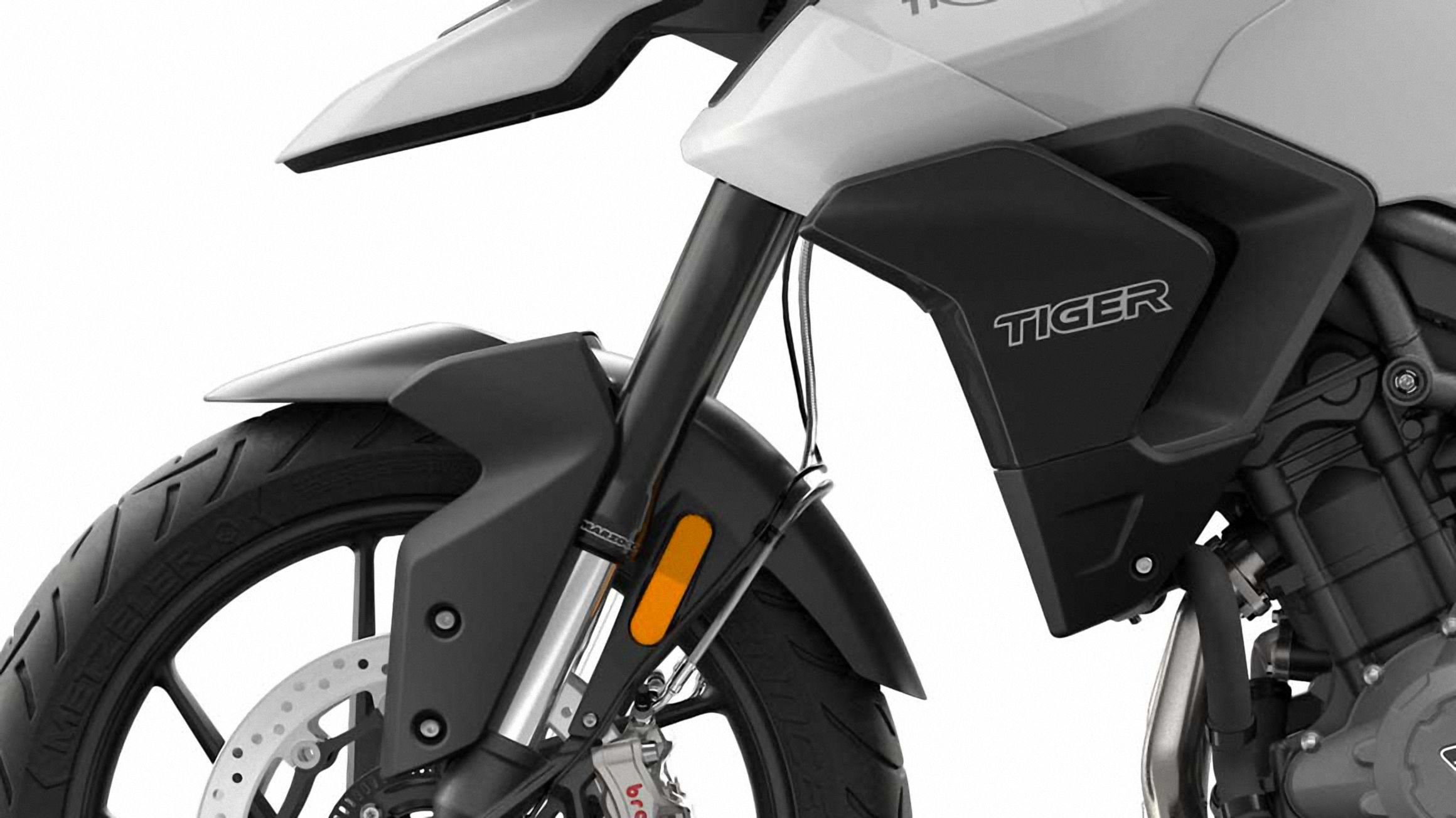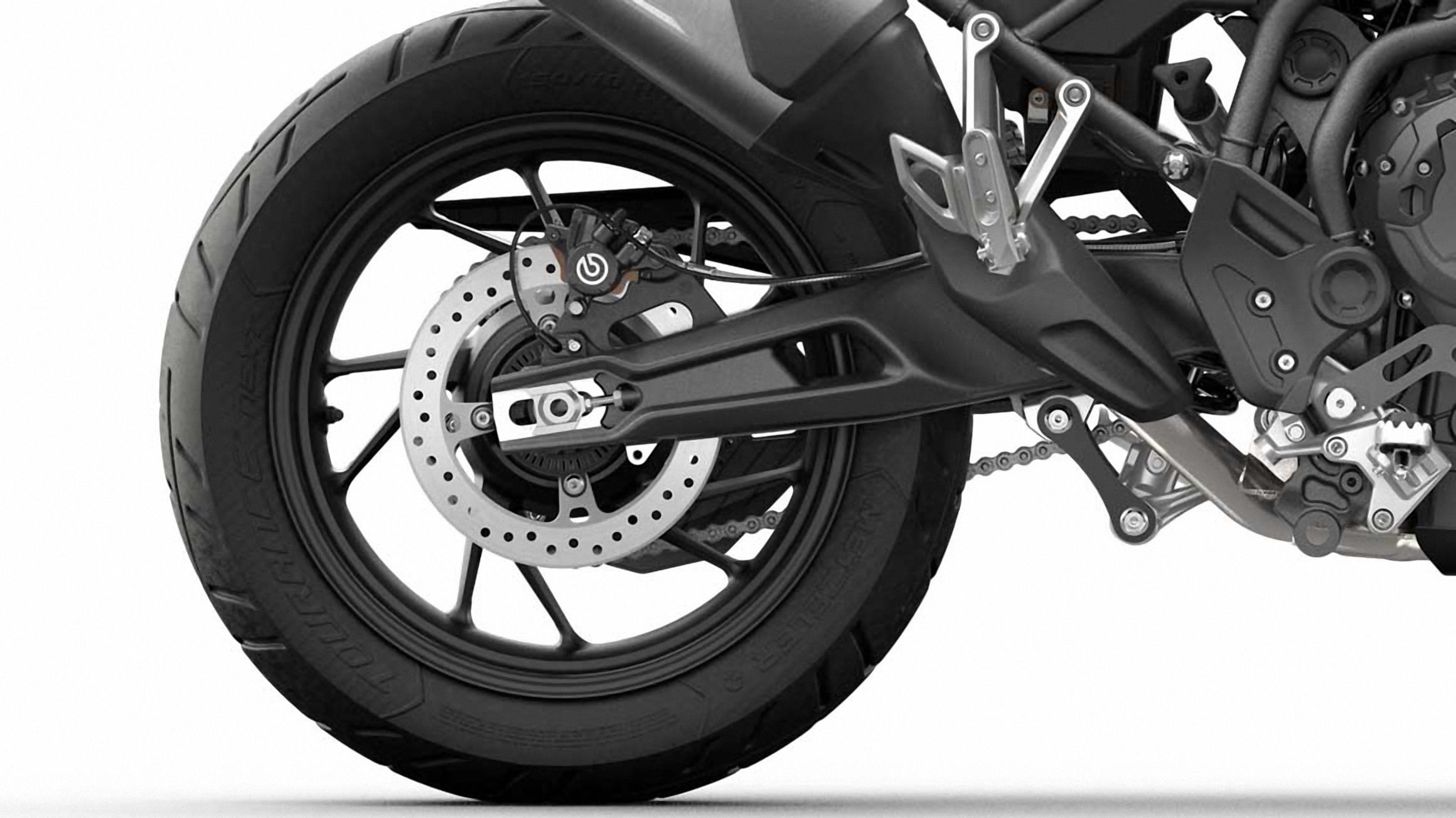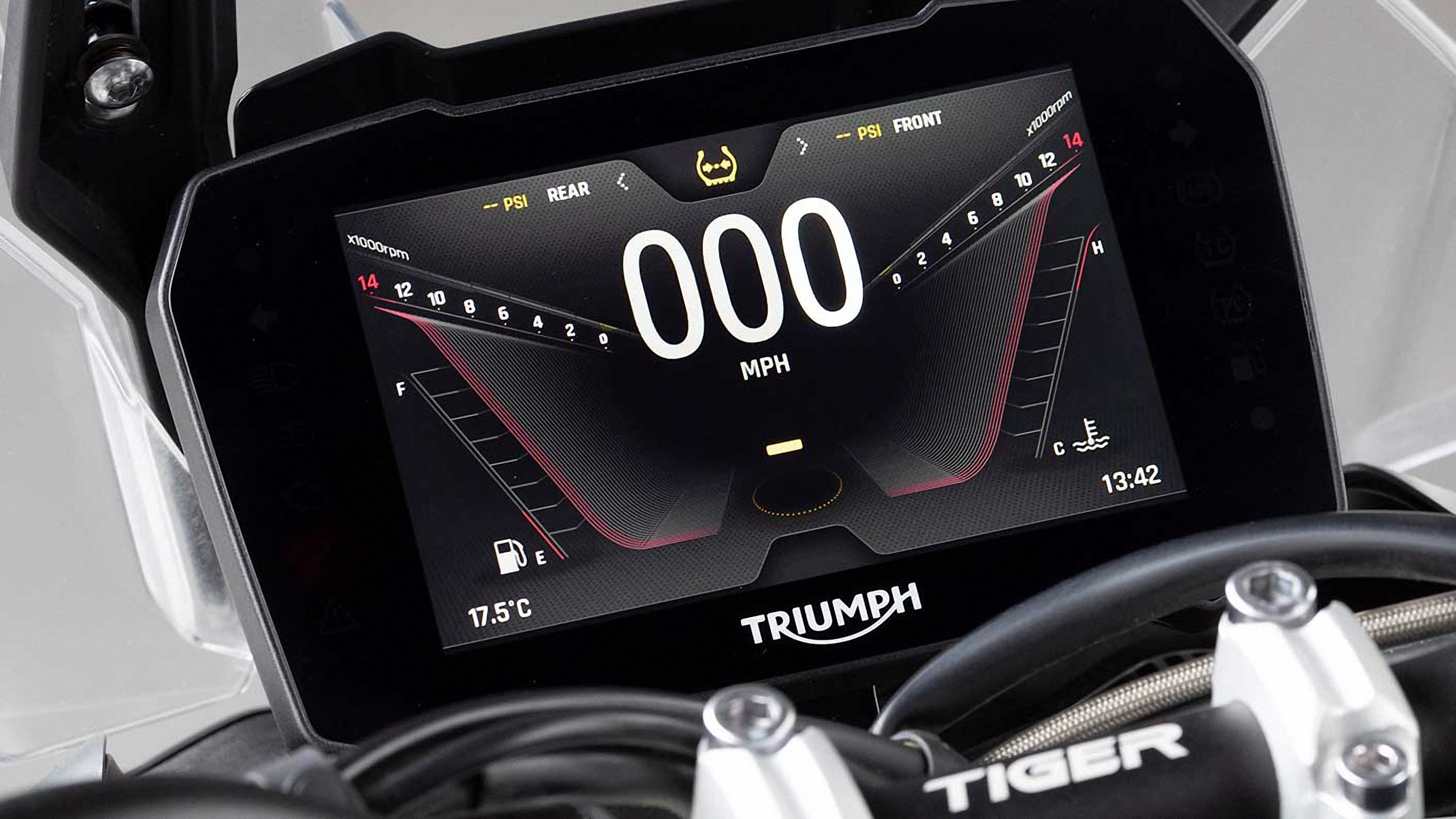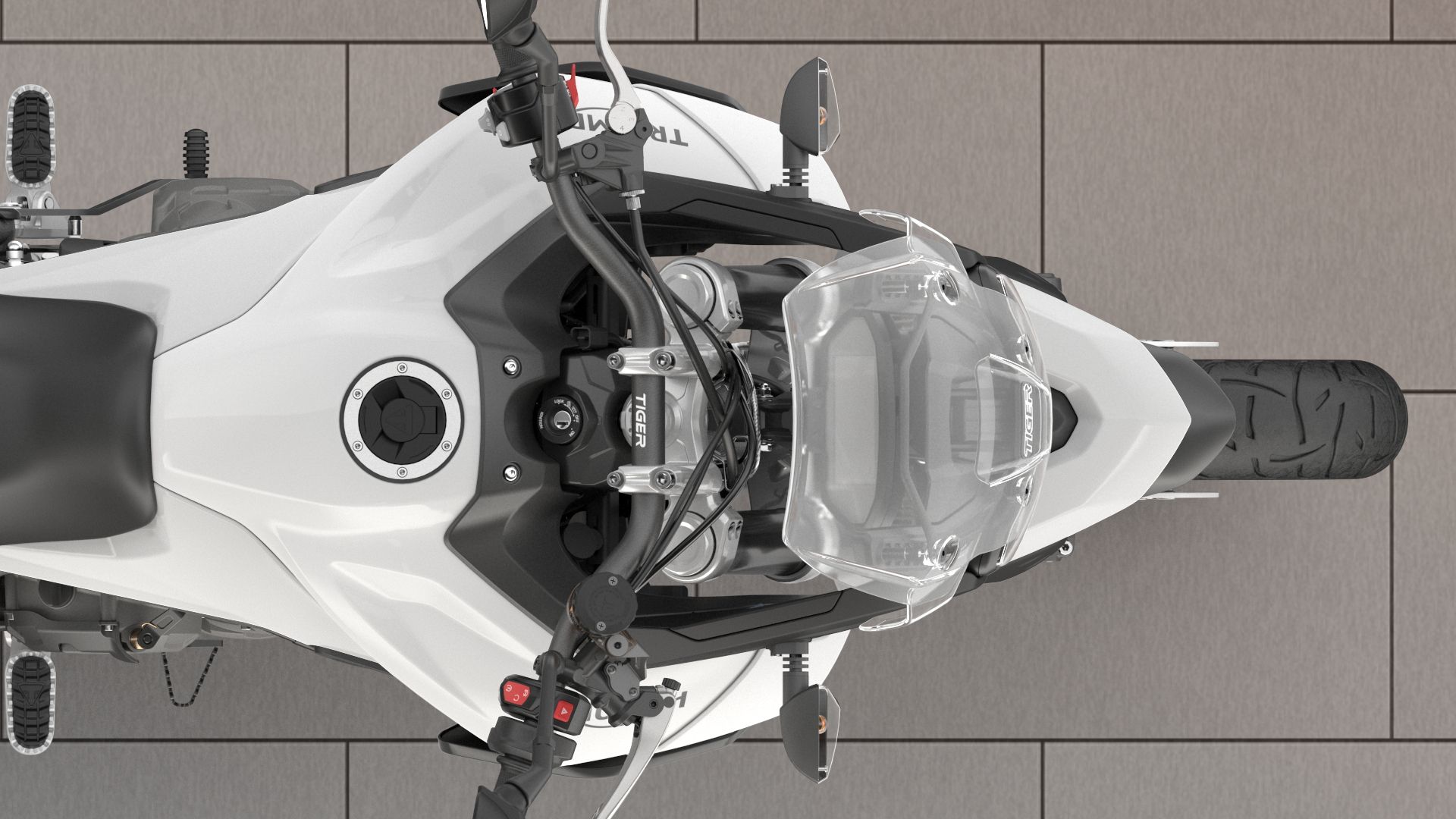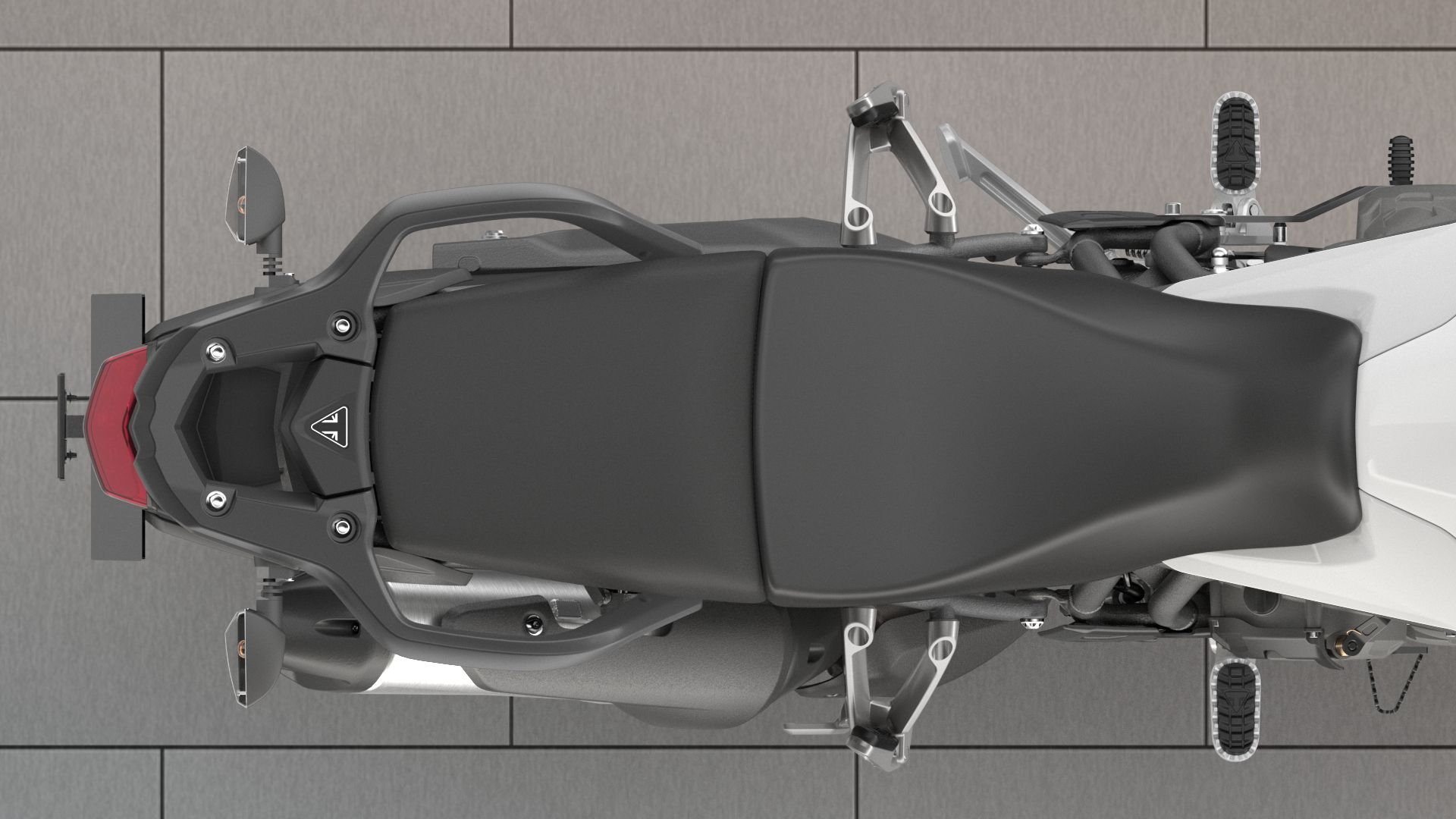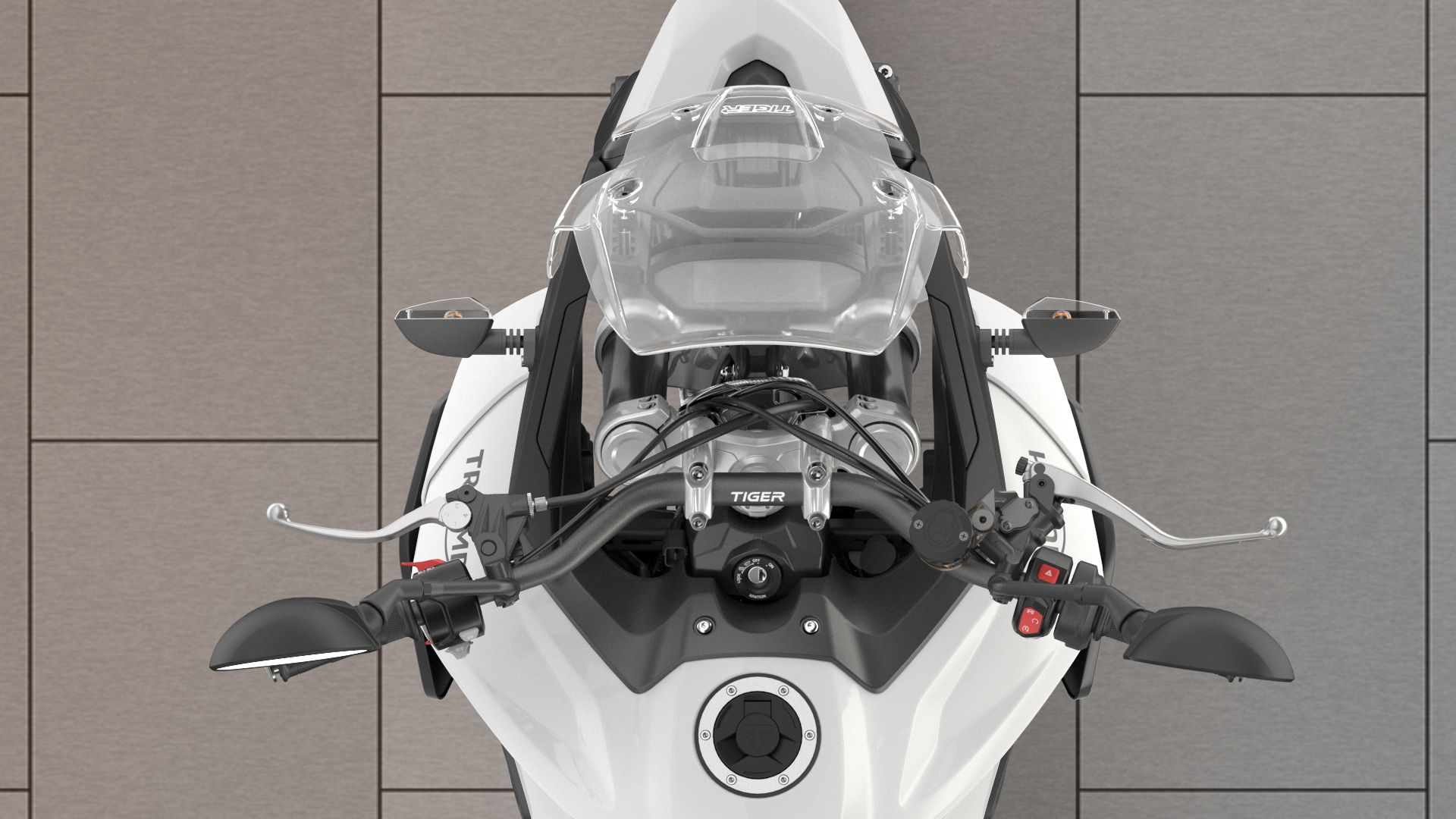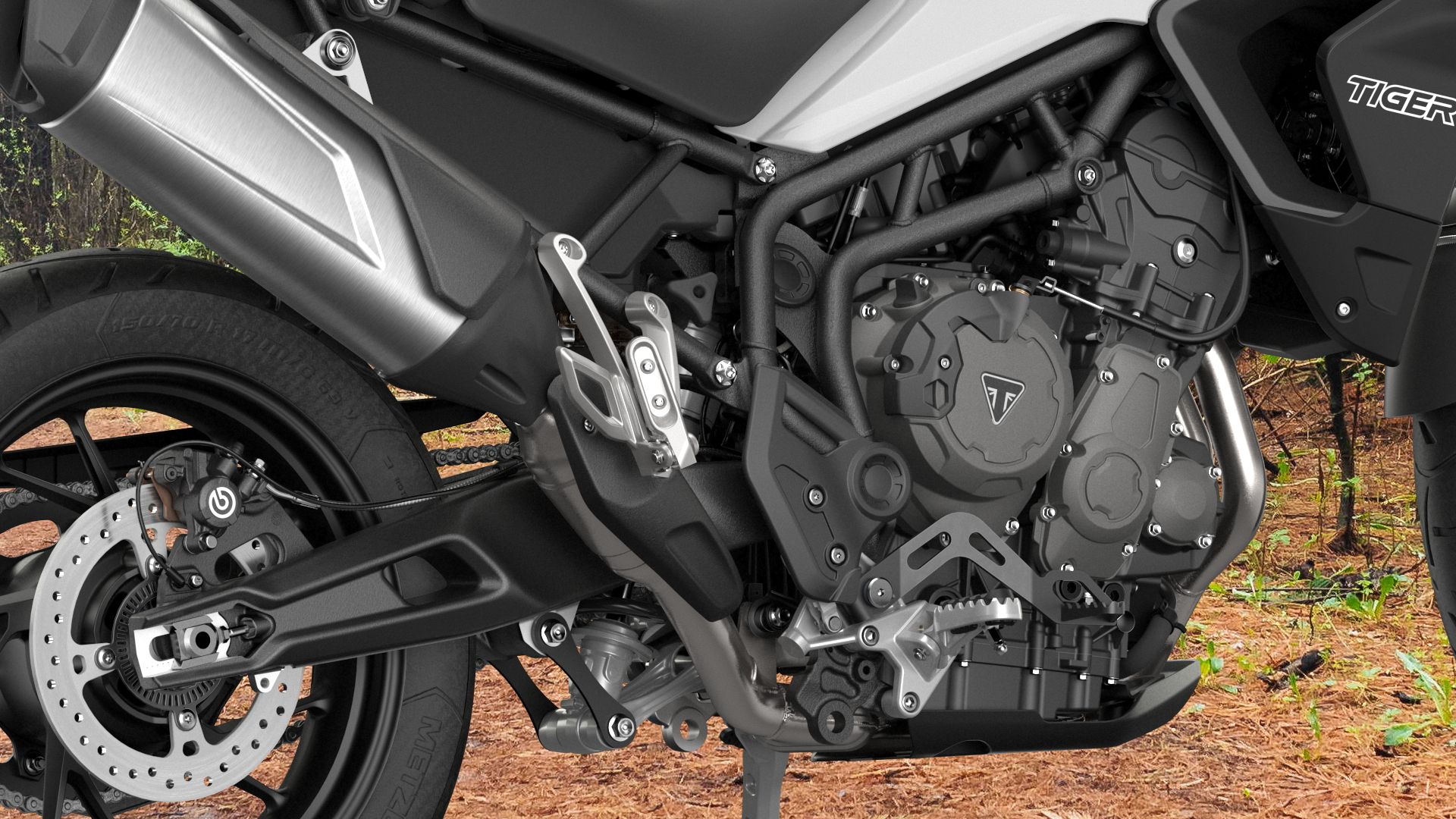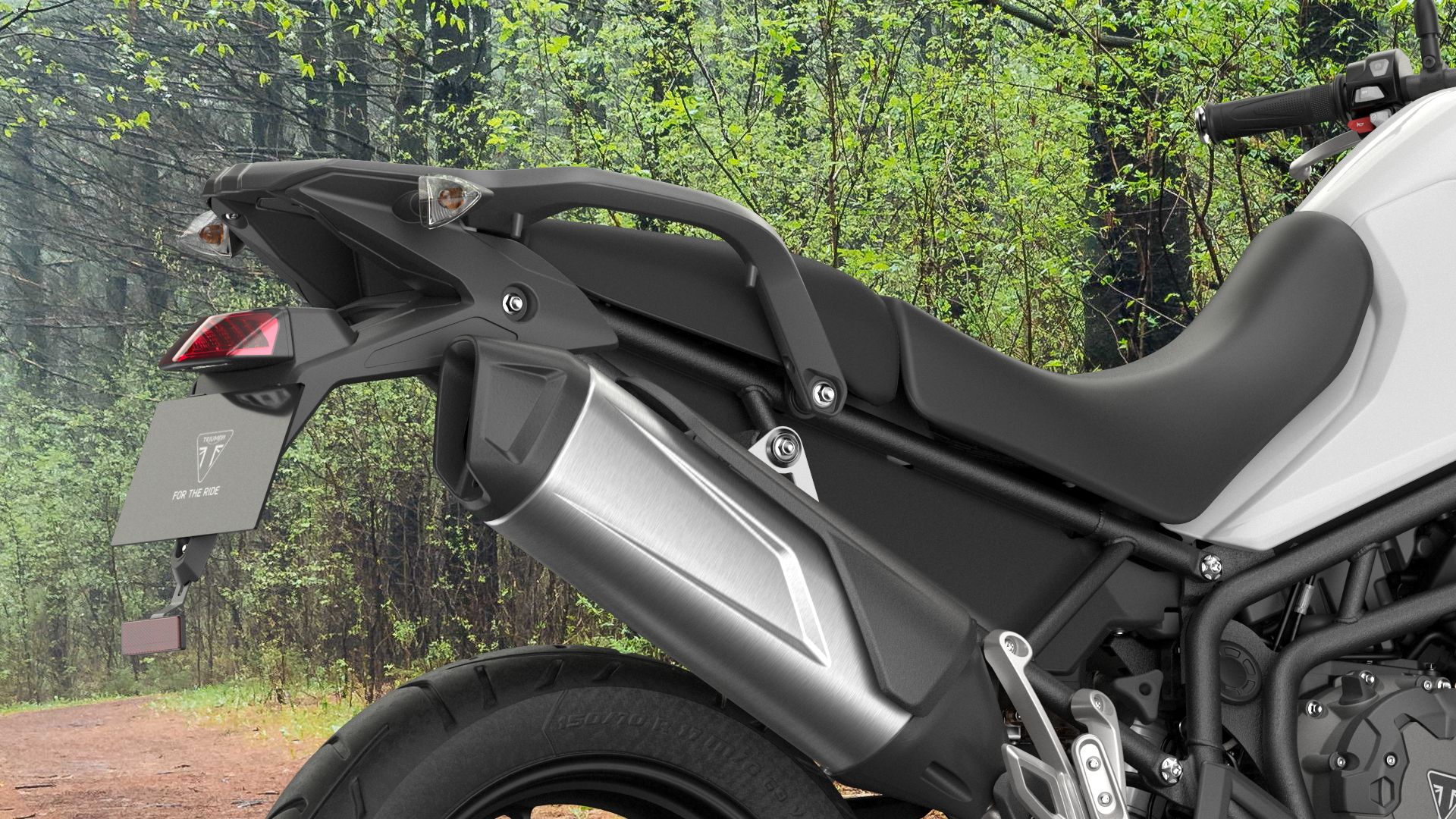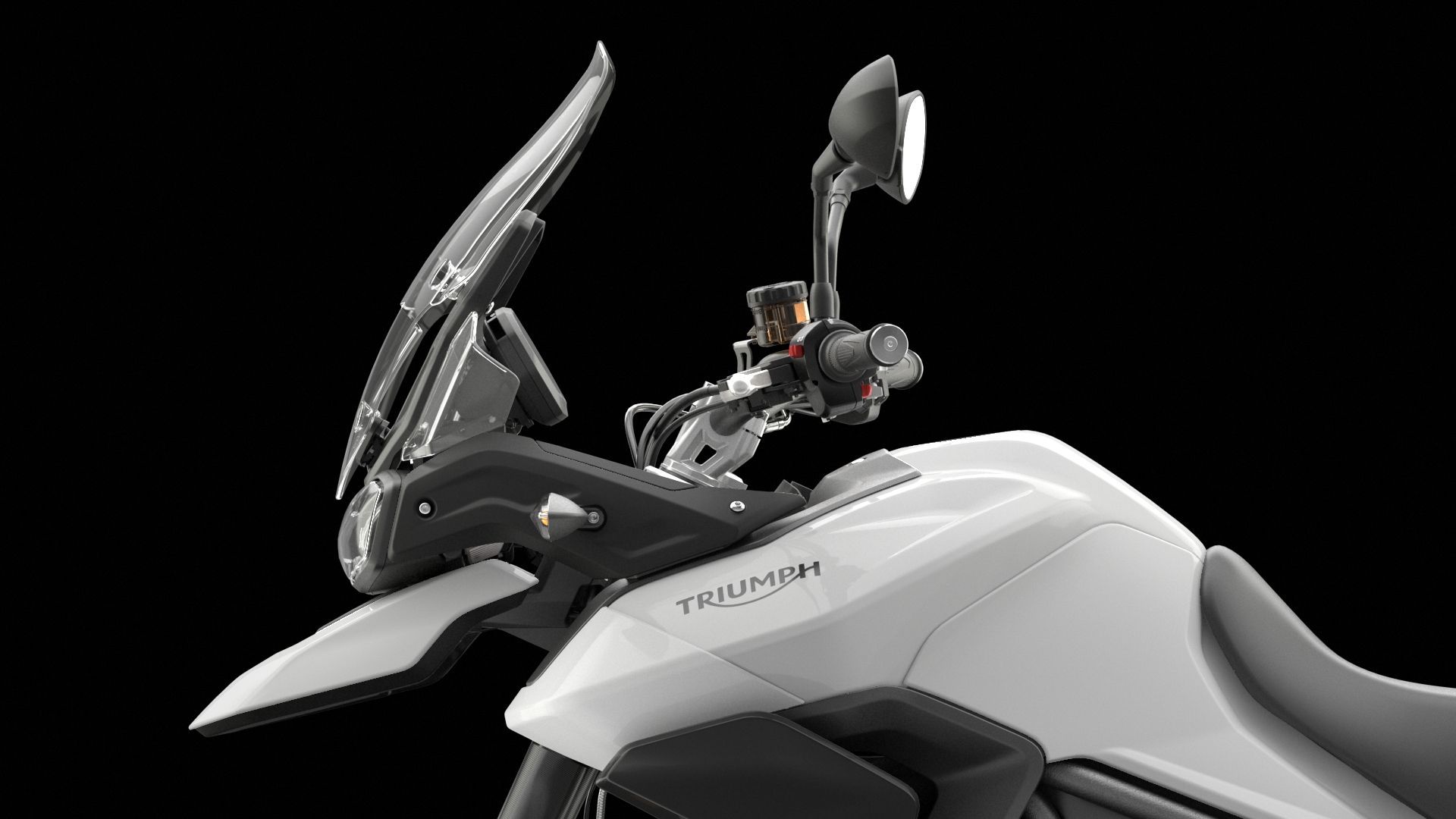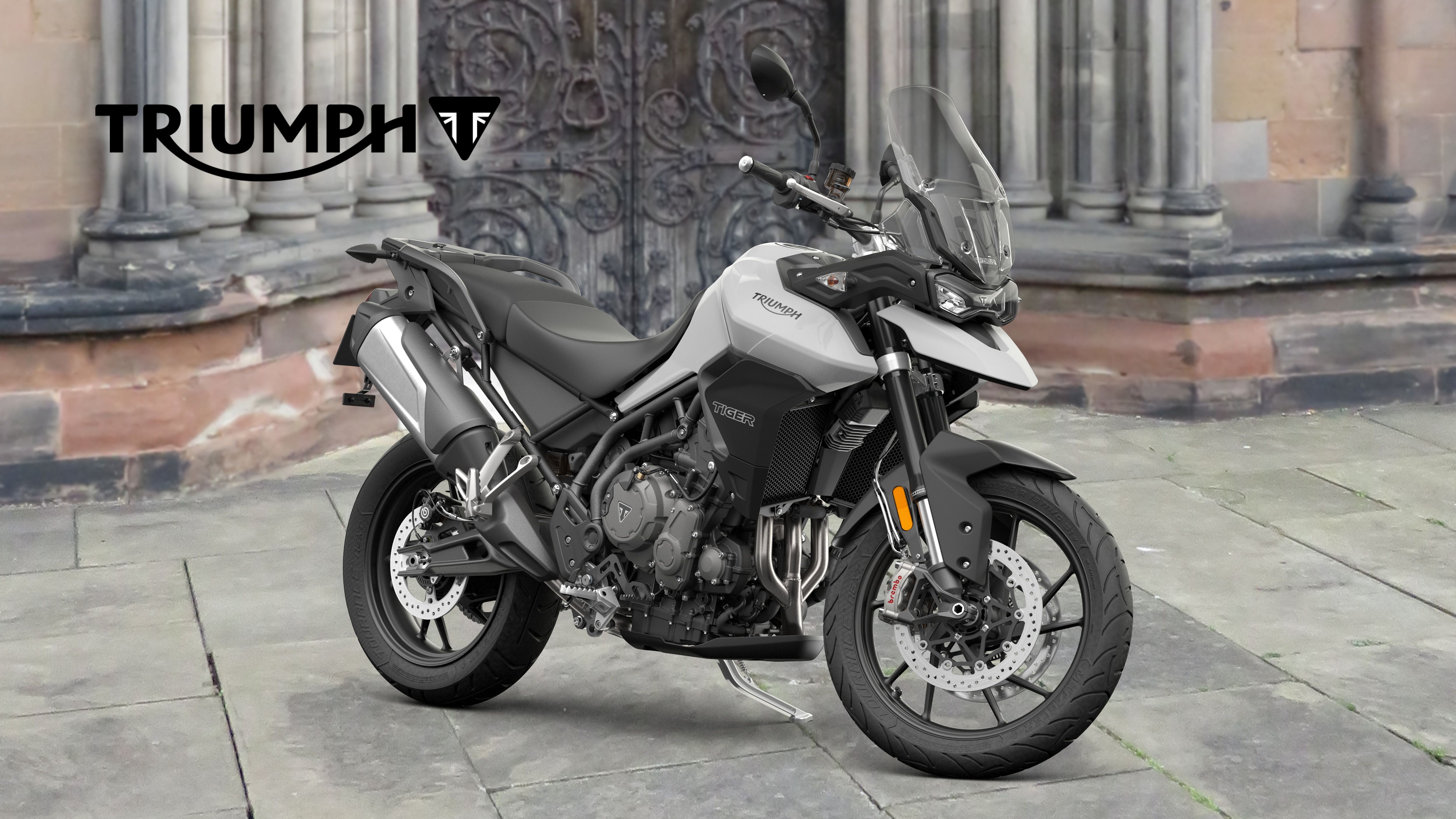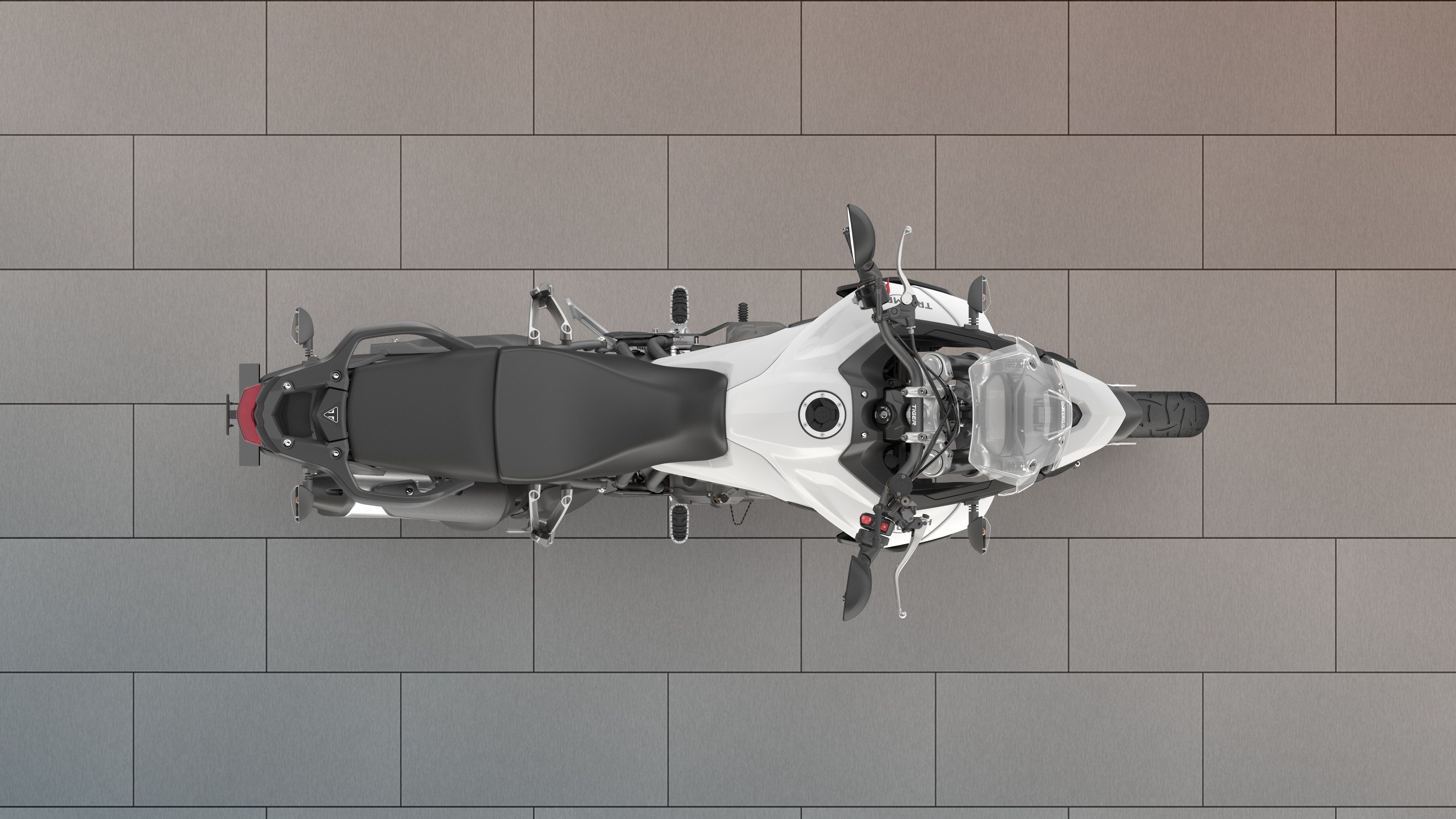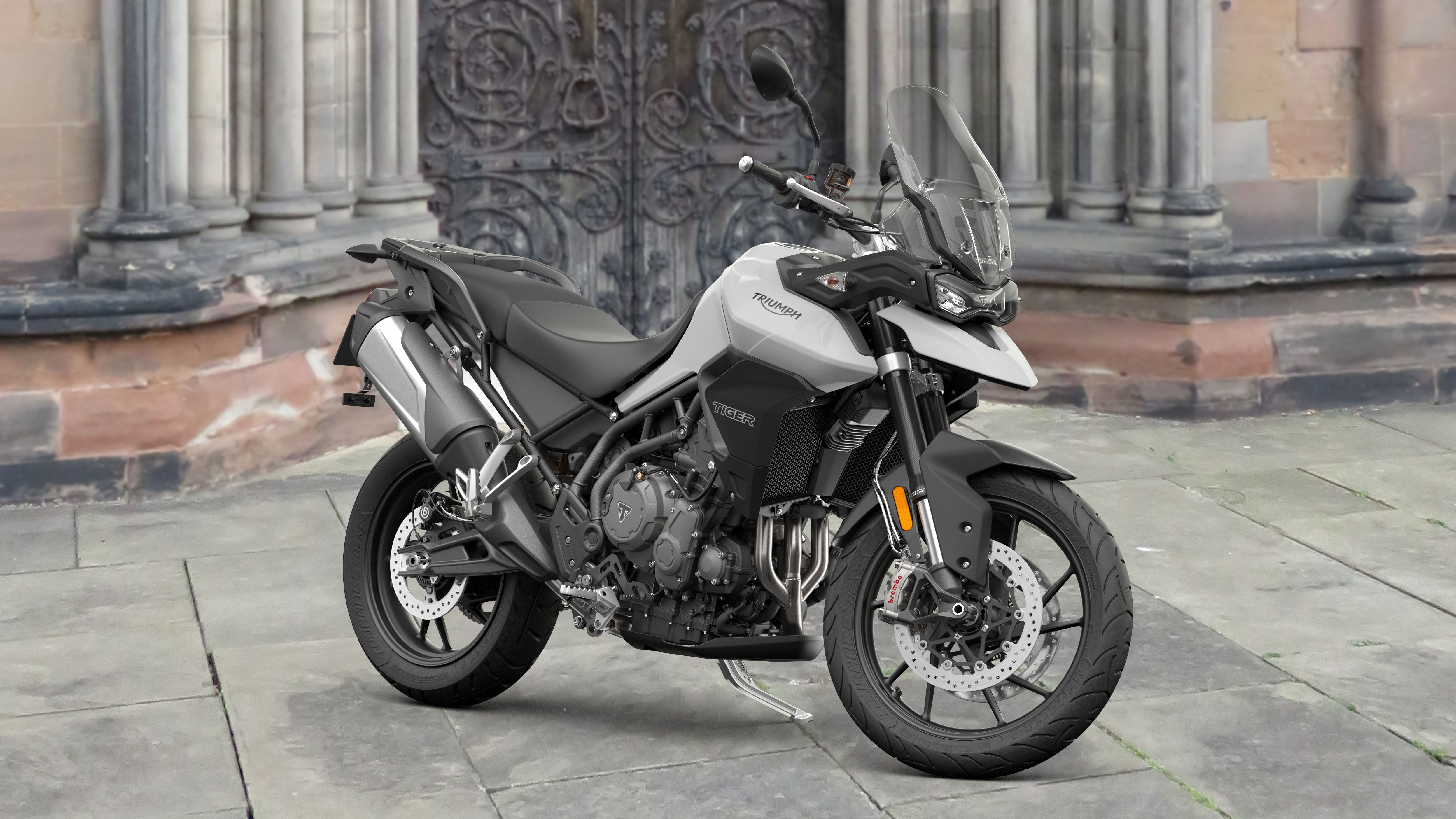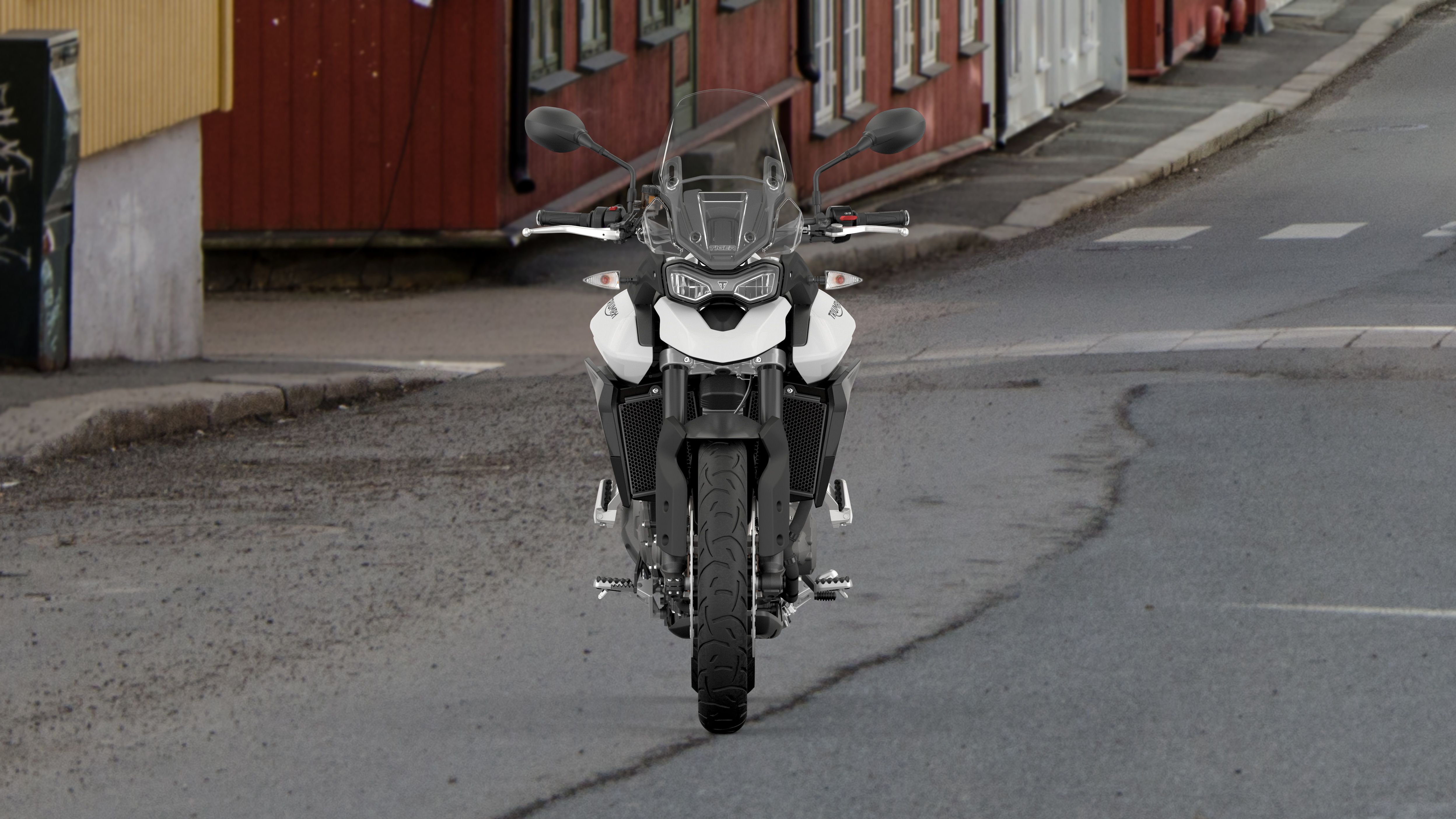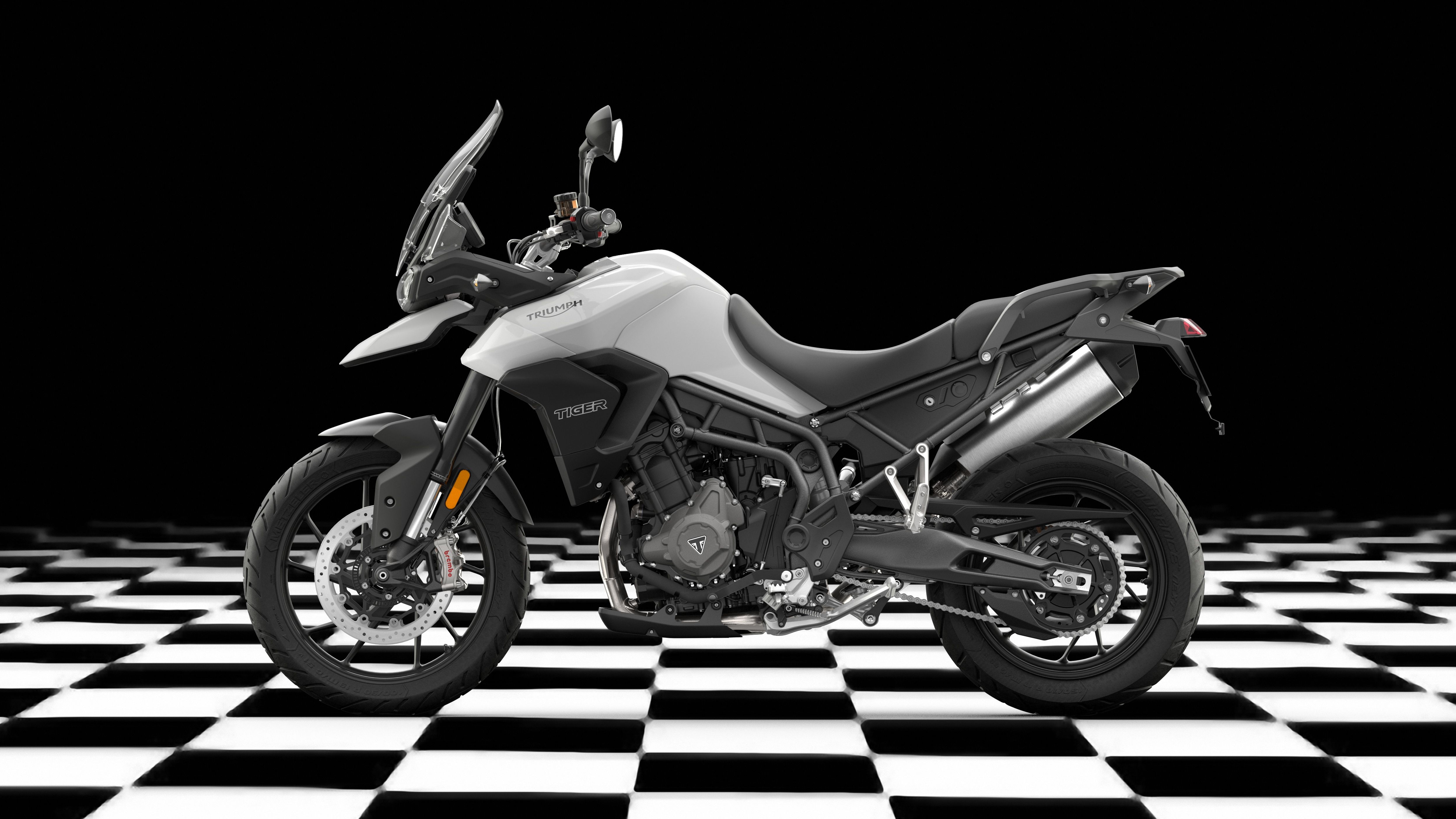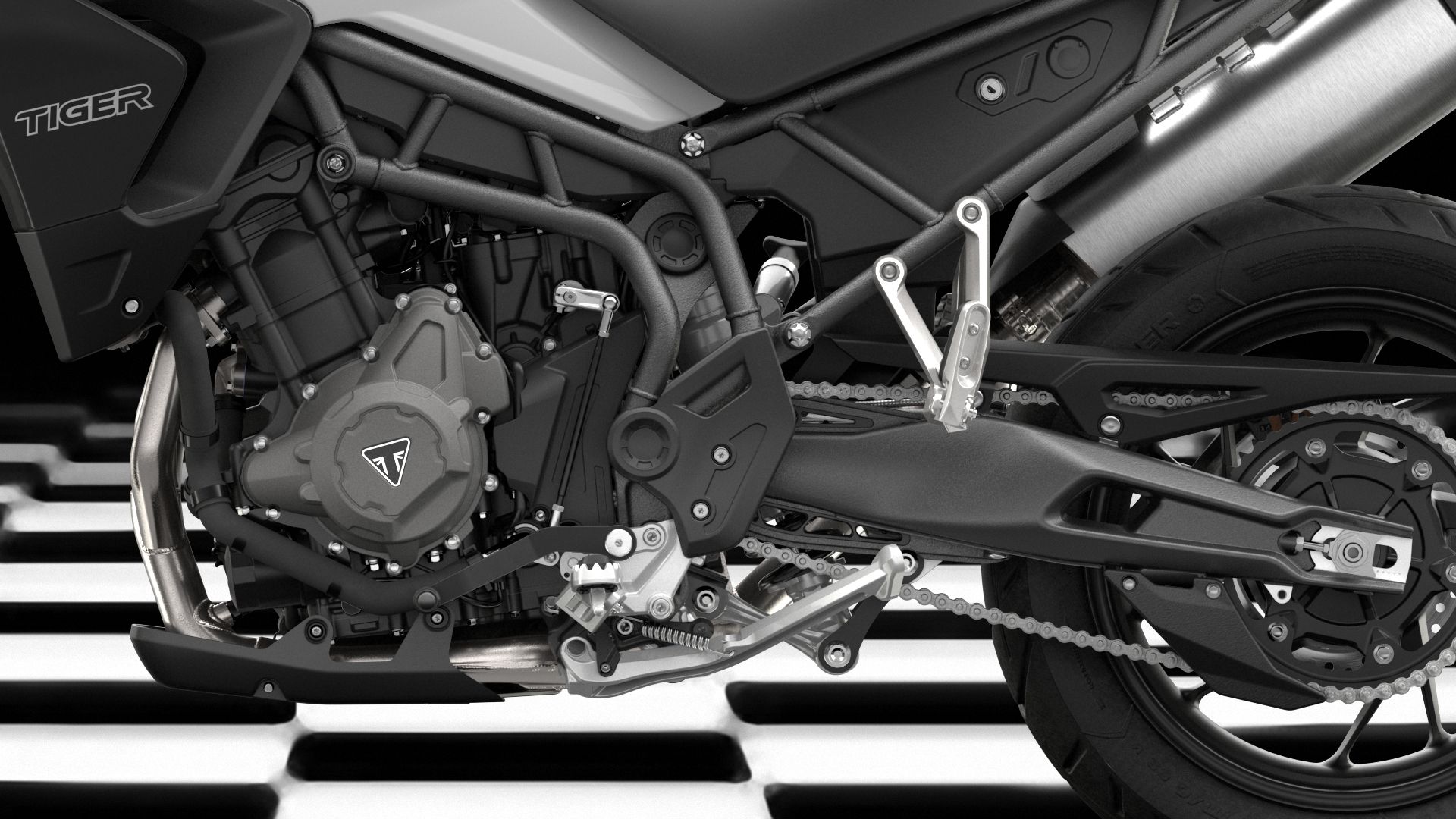Triumph up-sized its outgoing Tiger 800 adventure model ahead of MY2020 to create the all-new Tiger 900. This machine serves as a platform for a number of upscale stablemates, but today I want to focus on the base model. The factory balances capabilities and cost to deliver a bike that can both tour and serve as a daily commuter. The safety electronics covers the basics and come bundled with a handful of ride-quality controls for push-button personality changes to round out the package and give the 900 a bit of versatility.
2020 Triumph Tiger 900
- Make: Array
- Model: 2023 Triumph Tiger 900
- Engine/Motor: Inline-3
- Horsepower: 93.9 HP (70 kW) @ 8,750 RPM
- Torque: 4 LB-FT @ 7,250 RPM
- Transmission: Five-Speed
- MSRP: $14,700
2020 Triumph Tiger 900 Design
The new Tiger 900 carries itself with that unmistakable ADV panache and adds contributions of its own to deliver a new, up-to-date look for the Tiger line, a line that first saw light of day all the way back in 1936. A sculpted front fender leads the way with foil-shaped uprights that protect the inner fork tubes from road grit while they also shunt the wind around the tubes to reduce power-sapping drag. The typical bird's beak front end mounts dual headlights along with high-and-tight turn signals, all in LED. It's topped off with a vented windshield with small extensions down low that work with the wide cheek pieces to plow a groove in the wind for your trunk, head and legs.
Unlike some of its upper-echelon siblings, the base 900 rolls out sans handguards and baggage, but you can choose from two separate accessory packages to give it an off-road bent or even more of a blacktop bias to effectively make the 900 three-bikes-in-one. The Trekker Pack adds a top case and panniers for a total of 131 liters of storage along with an adjustable windscree. The Expedition Pack sports panniers along with headlight/fuel tank/fork guards to lend the 900 some extra resistance to damage from terrain strikes and drops out in the rough.
All of the instrumentation is localized in the five-inch TFT display that doubles as an interface for the ride-control electronics. The new larger 5.28-gallon fuel tank, up from 5 gallons on the Tiger 800, promises to have plenty of endurance to cover a lot of ground between fuel stops. It also gives the flyline that characteristic camel's hump ahead of a deep swale for the pilot's seat and an up-swept pillion perch. Fold-up footpegs and large grab rails come stock; the latter meet in the back to form a small luggage rack for some open-air cargo capacity.
The LED taillight rides perched away from the tail in a departure from the usual tucked in the tail, but I'm sure the visibility is better with this setup. It mounts to the short mudguard that doubles as a plateholder, and oddly enough, the rear blinkers mount highest on the tail where they are likely to survive a drop.
2020 Triumph Tiger 900 Chassis
Tubular-steel members make up the modular frame on the Tiger 900 with the engine used as a stressed member to complete the structure and lend it its final rigidity. The headstock sets a rake angle of 24.6 degrees with 5.24 inches of trail to give the 423 pound (dry) a curve-gobbling nature that trades just a skosh of agility for some high-speed, straight-line stability, and low-stress interstate travel. A bolt-on subframe mounts the saddle with an upswept design to loft the pillion, and it's paired with bolt-on passenger footrests to complete the stock package.
Marzocchi suspension products support the Tiger 900 with non-adjustable, 45 mm usd forks up front opposite a gas shock with the obligatory manual spring-preload adjustment. Suspension travel is generous for riding on civilized roads and adequate for light terrain with 7.08/6.69 inches of travel on the front and rear, respectively.
Cast wheels round out the rolling chassis with a 100/90-19 ahead of a 150/70-17. Brembo is the brand of choice for the anchors, so the 900 relies on dual 320 mm discs and Stylema® four-piston Monobloc calipers to provide the bulk of the stoppage with a 255 mm disc and single-pot caliper to keep the rear end behind you, where it belongs. A stock ABS feature provides the first of the electronic safety nets, and it looks like it's the regular garden-variety anti-lock system instead of the lean-sensitive sort.
|
Frame: |
Tubular steel frame, bolt-on subframe |
|
Swingarm: |
Twin-sided, cast aluminum alloy |
|
Front Suspension: |
Marzocchi 45 mm upside down forks, non-adjustable. |
|
Rear Suspension: |
Marzocchi rear suspension unit, manual preload adjustment, 6.69 in (170 mm) rear wheel travel. |
|
Rake: |
24.6º |
|
Trail: |
5.24 in (133.3 mm) |
|
Front Brakes: |
Twin 320 mm floating discs, Brembo Stylema 4-piston Monobloc calipers. Radial front master cylinder, ABS |
|
Rear Brakes: |
Single 255 mm disc. Brembo single-piston sliding caliper, ABS |
|
Front Wheel: |
Cast alloy, 19 x 2.5 in |
|
Rear Wheel: |
Cast alloy, 17 x 4.25 in |
|
Front Tire: |
100/90-19 |
|
Rear Tire: |
150/70R17 |
2020 Triumph Tiger 900 Drivetrain
Power on the Tiger 900 comes from a transverse triple to the tune of 93 horsepower at 8,750 rpm and 64 pound-feet of torque at 7,250 rpm, so clearly it's a rev-loving plant, but the even power pulses of the in-line, three-cylinder engine smoothly delivers the goods. The short-stroke mill runs with a 78 mm bore and 61.9 mm stroke for a total displacement of 888 cc and a middling compression ratio of 11.27-to-1 that will demand premium road champagne, or some sort of octane additive come fill-up time.
Dual over-head cams time four poppets-per-cylinder for a total of 12 valves for free, efficient aspiration. A liquid-cooling system dumps the waste heat through a dual radiator systemboosted by the dual-layered engine cowling and its vents.
A slipper-style clutch couples the engine power to the six-speed transmission for another layer of safety that prevents wheel hop on hard downshifts and provides a lighter clutch-lever pull than you would expect from a standard clutch. Power makes its way to the rear wheel via a tough, O-ring chain drive, and the overall drive ratio is geared to deliver 125 mph at the redline in top gear.
|
Engine: |
Liquid-cooled, 12-valve, DOHC, inline 3-cylinder |
|
Displacement: |
888 cc |
|
Bore x Stroke: |
78 mm x 61.9 mm |
|
Compression: |
11.27:1 |
|
Max Power EC: |
93.9 hp (70 kW) @ 8,750 rpm |
|
Max Torque EC: |
64 lb-ft @ 7,250 rpm |
|
System: |
Multi-point sequential electronic fuel injection |
|
Exhaust: |
Stainless steel 3-into-1 header system, side mounted stainless steel silencer |
|
Final Drive: |
O-ring chain |
|
Clutch: |
Wet, multi-plate |
|
Gearbox: |
6-speed |
2020 Triumph Tiger 900 Pricing
For its inaugural year, the Tiger 900 comes only in Pure White-over-black for an entirely monochromatic finish.
|
Instrument Display and Functions: |
5" TFT multi-functional instrument pack with digital speedometer, trip computer, digital tachometer, gear position indicator, fuel gauge, service indicator, ambient temperature, clock, and Riding Modes. |
|
Color: |
Pure White |
|
Price: |
$12,500 |
2020 Triumph Tiger 900 Competitors
For my competitor against the Tiger 900, I decided to draw from one of the Japanese Big Four rather than grabbing another Euro, and I went with the V-Strom 1050 as Suzuki's base-model liter adventurer.
Suzuki V-Strom 1050
While the Tiger 900 displays that proverbial stiff upper lip we expect from a Brit, the V-Strom has the more finished, refined look of the two and comes with design cues from the old-school Suzuki Dakar Rally bikes. The double coverage of the front fender and bird's beak fairing give both a similar profile up front, as well as the stock windshield, but the V-Strom's glass is adjustable for both height and angle for a potential edge in comfort.
Like brothers-from-another-mother, both rock sturdy passenger's gear with a small luggage rack out back, but that's to be expected in such a rigidly-defined genre. A slender, aluminum twin-spar frame uses the V-Strom's engine as a stressed member, much like the Tiger, as well. For an all-around tech advantage, Suzuki comes with all the same electronics as the Tiger, plus some proprietary Suzuki goodies like an array of low-rpm-assistance and cold-start aids to prevent stalls and help keep the fire lit in sub-optimal conditions.
The V-Strom scores again in the stems with the full trinity of adjustments up front plus preload and rebound-damping adjusters out back, and the pain continues for Triumph as Suzuki manages to pack in more cubeage. This brings with it a concurrent increase in power with a claimed 106 ponies that leaves the Tiger at a deficit with its 93.9-horsepower output.
Read our full review of the Suzuki V-Strom 1050.
He Said
“Gotta' say, I really like the Adventure package with all the extra crash bars. Throw some stealth-knobbies on that and you can do some serious work. Plus, its lack of heft makes it easy to stand up if (read: when) you drop it. More and more I'm seeing road-centric adventure bikes pressed into commuter duty, and it's easy to see why. More and more, ADV bikes are the “standard” model of the new century.”
She Said
My wife and fellow motorcycle writer, Allyn Hinton, says, “Thank goodness Triumph discarded the old Tiger naming convention. All the variations of XC and XR designations were confusing. I like the new engine so far. This is a new engine and not just a bored out 800. The 900 has a new crank configuration and new firing order that makes it feel like a V-twin.”
2020 Triumph Tiger 900 Specifications
|
Engine & Drivetrain: |
|
|
Engine: |
Liquid-cooled, 12-valve, DOHC, inline 3-cylinder |
|
Displacement: |
888 cc |
|
Bore x Stroke: |
78 mm x 61.9 mm |
|
Compression: |
11.27:1 |
|
Max Power EC: |
93.9 hp (70 kW) @ 8,750 rpm |
|
Max Torque EC: |
64 lb-ft @ 7,250 rpm |
|
System: |
Multi-point sequential electronic fuel injection |
|
Exhaust: |
Stainless steel 3-into-1 header system, side mounted stainless steel silencer |
|
Final Drive: |
O-ring chain |
|
Clutch: |
Wet, multi-plate |
|
Gearbox: |
6-speed |
|
Chassis: |
|
|
Frame: |
Tubular steel frame, bolt-on subframe |
|
Swingarm: |
Twin-sided, cast aluminum alloy |
|
Front Suspension: |
Marzocchi 45 mm upside down forks, non-adjustable. |
|
Rear Suspension: |
Marzocchi rear suspension unit, manual preload adjustment, 6.69 in (170 mm) rear wheel travel. |
|
Rake: |
24.6º |
|
Trail: |
5.24 in (133.3 mm) |
|
Front Brakes: |
Twin 320 mm floating discs, Brembo Stylema 4-piston Monobloc calipers. Radial front master cylinder, ABS |
|
Rear Brakes: |
Single 255 mm disc. Brembo single-piston sliding caliper, ABS |
|
Front Wheel: |
Cast alloy, 19 x 2.5 in |
|
Rear Wheel: |
Cast alloy, 17 x 4.25 in |
|
Front Tire: |
100/90-19 |
|
Rear Tire: |
150/70R17 |
|
Dimensions & Capacities: |
|
|
Width Handlebars: |
32.67 in (830 mm) |
|
Height Without Mirror: |
55.51-57.48 in (1,410-1,460 mm) |
|
Seat Height: |
31.88-32.67 in (810-830 mm) |
|
Wheelbase: |
61.25 in (1,556 mm) |
|
Dry Weight: |
423 lbs (192 kg) |
|
Tank Capacity: |
5.28 US gal (20 L) |
|
Details: |
|
|
Instrument Display and Functions: |
5" TFT multi-functional instrument pack with digital speedometer, trip computer, digital tachometer, gear position indicator, fuel gauge, service indicator, ambient temperature, clock, and Riding Modes. |
|
Color: |
Pure White |
|
Price: |
$12,500 |
Further Reading
Triumph
Read more Triumph news.

